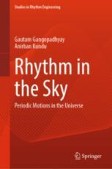Search
Search Results
-
Post-AGB Objects and Planetary Nebulae
Planetary nebulae and post-AGB objects are luminous dust emitters in the infrared. Indeed it is by virtue of their strong dust emission that most...
-
Bipolar Nebula AFGL 2688 in the System of Post-AGB Star V1610 Cyg
AbstractWe present a survey of the results of photometric and spectral observations of a nebula AFGL 2688 in the system of post-AGB star V1610 Cyg....

-
The Post-AGB Star IRAS 07253–2001: Pulsations, Long-Term Brightness Variability and Spectral Peculiarities
AbstractThe observations and comprehensive study of intermediate initial mass stars at the late stages of evolution, and after the asymptotic giant...

-
Post-AGB stars as tracers of the origin of elements in the universe
The chemical evolution of galaxies is governed by the chemical yields from stars, especially from Asymptotic Giant Branch (AGB) stars. This...

-

-
Adaptive Optics Science with the MMT Adaptive Secondary: Mid-IR AO Imaging of the Post-AGB Star AC Her
The world’s first adaptive secondary has been commissioned at the 6.5m MMT. Early science results suggests that it is unique and highly productive....
-
Chemical tracers of a highly eccentric AGB–main-sequence star binary
Binary interactions have been proposed to explain a variety of circumstellar structures seen around evolved stars, including asymptotic giant branch...

-
High-Resolution IR Spectroscopy of the Circumstellar Medium of AGB Stars
The evolution of a star on the asymptotic giant branch (AGB) is complex and fascinating, and our overall understanding of this phase is reasonably...
-
Multicolor Photometry and Peculiarities of the Spectrum for the post-AGB Candidate AU Vulpeculae (IRAS 20160+2734)
AbstractWe present the results of a UBVRcIc and JHKLM photometric monitoring campaign conducted in 2016–2020, low-resolution spectroscopy, and an...

-
Instability in the System of the Distant Post-AGB Star LS III +52°24 (IRAS 22023+5249)
AbstractThe optical spectra of the B-supergiant LS III +52°24 (IRAS 22023+5249) obtained at the 6-m BTA telescope with a resolution
... 
-
TP-AGB Stars to Date High-Redshift Galaxies with the Spitzer Space Telescope
We present new stellar population models that include the contribution of the Thermally Pulsing Asymptotic Giant Branch (TP-AGB) phase also in the...
-
K-band spectra of selected post-AGB candidates
We present medium resolution (1000) K-band spectra of 12 post-AGB candidates and related stars. For several objects in our sample, these spectra were...

-
Gas and Dust in the Circumstellar Envelopes of Stars on (and Beyond) the AGB
Circumstellar envelopes, formed by intense winds as stars evolve along the asymptotic giant branch, have proven to be rich in different molecular...
-
Evolution and Pulsations of Population I Post-AGB Stars
Evolutionary calculations of population I stars with initial masses M 0 = 1 M ⊙ , 1.5 M ⊙ and 2 M ⊙ were carried out up to the stage of the...
-
Signatures of convection in the atmospheres of cool evolved stars
Evolved cool stars of various masses are major cosmic engines, delivering substantial mechanical and radiative feedback to the interstellar medium...

-
Recent advances in RV Tauri stars
The availability of multi-wavelength observations and parallaxes from the space missions and very comprehensive models of AGB evolution that include...

-
PAH emission features in star-forming regions and late type stars
Mid-infrared emission spectra, obtained from ISO archive, of thirteen astrophysical objects as well as computed spectra of 27 polycyclic aromatic...

-
Science with a Small Two-Band UV-Photometry Mission II: Observations of Stars and Stellar Systems
We outline the impact of a small two-band UV-photometry satellite mission on the field of stellar physics, magnetospheres of stars, binaries, stellar...

-
Stars That Breathe
Stars which show a variation in their brightness are called variable stars. Pulsating variables are intrinsic variable stars whose brightness changes...
-
The s process in massive stars, a benchmark for neutron capture reaction rates
A clear definition of the contribution from the slow neutron-capture process (s process) to the solar abundances between Fe and the Sr-Zr region is a...

